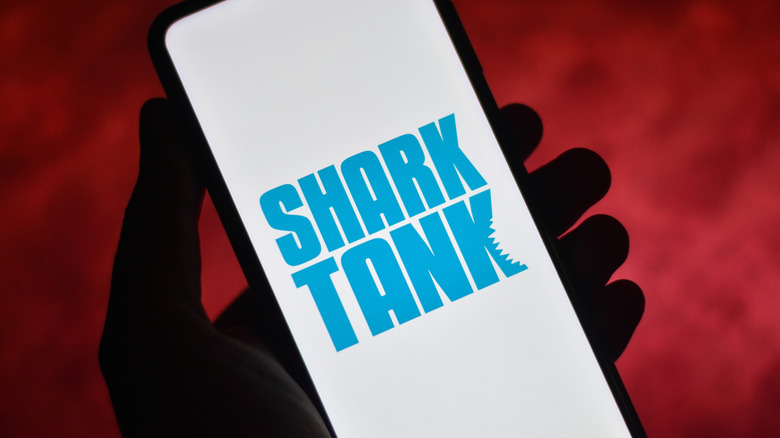What Happened To Ionic Ear After Shark Tank?
The reality series "Shark Tank" premiered in 2009 with overwhelmingly positive ratings, earning it a long-term spot on TV with more than a dozen seasons under its belt. That debut episode featured entrepreneurs looking for funding for products like packing boxes, a medicine dropper disguised as an elephant, and a very unique Bluetooth headset. The latter, called Ionic Ear, was a Bluetooth implant presented by telecommunications engineer Darrin Johnson, who imagined it as a replacement for pesky Bluetooth headphones and earbuds. Unlike those wearables, the Ionic Ear needed to be surgically implanted into the ear canal. It was an idea straight out of the pages of a Philip K. Dick novel.
Johnson's overall goal with the Ionic Ear was to eliminate the fear of your Bluetooth headset falling off if you move too much. The Ionic Ear was the whole package, including a battery, speaker, and microphone. At one point during the episode, investor Kevin O'Leary — also known as Mr. Wonderful — jokingly said, "He's so far ahead of his time." It might have been said in jest, but considering Neuralink exists, he wasn't wrong.
Neuralink's N1 Implant isn't identical to the Ionic Ear — it's an implant that Elon Musk says will let those without use of their extremities control a computer or, eventually, robotic limbs with their brain– but it's in the same vein in the sense that it's an implant requiring invasive surgery with anesthesia. Regardless, the Ionic Ear made for an interesting pitch in the show's first episode — one that would be remembered not just by viewers but also the sharks, as well.
How did Ionic Ear do on Shark Tank?
The Ionic Ear was a unique idea that Darrin Johnson believed required an investment of $1 million for a 15% ownership stake, giving his company a valuation of $6.67 million. However, the sharks need more than "unique" to bite on a pitch and the moment they heard Johnson say the device would require surgery, they laughed. To say things started off poorly would be an understatement because the sharks never got to negotiations, nor did Johnson get a chance to share his own backstory.
Daymond John backed out before he could finish his own thought, clearly disturbed by the required surgery. Kevin Harrington didn't wait for a lull in the conversation, announcing his disinterest while Johnson was speaking. When asked how users would charge the implant, Johnson displayed a diagram that showed a Q-tip-sized cylinder — that really looked more like a needle — entering the ear canal, which would easily scare away even the most interested consumer.
One by one, the sharks backed away from negotiations as they were unable to wrap their head around marketing a device that required invasive surgery. When Robert Herjavec asked about upgrades, Johnson explained that the user would have to go back for additional surgeries, at which point Barbara Corcoran backed out. Johnson attempted to save his pitch by comparing his product to the invention of breast implants, but the investors didn't buy it or his product. He lost the remaining sharks and left the stage without a deal.
What happened to Ionic Ear after Shark Tank?
The sharks on "Shark Tank" can be a tough crowd to please. Not everybody walks away with a deal. However, many go on to continue with their venture and some even find a modicum of success. Maybe being laughed at was too discouraging for Darrin Johnson, but his product never became more than a prototype. He likely felt similar to the founders of the Amber Phone Charging Station in season six, who had some choice words for Herjavec after their pitch. Several publications have attempted to track down Johnson to no avail. He hasn't continued pursuing his Ionic Ear idea — at least not publicly.
Barbara Corcoran hasn't forgotten about Ionic Ear. She told Business Insider in a 2014 interview, "That was the worst pitch. I think if you ask the other sharks, they would agree." Some people have since considered the Besomebody app from season eight the worst pitch and even Corcoran went on to admit that the Sullivan Generator from season three was equally bad. At the end of the show's 100th episode, Corcoran also calls it her favorite pitch, despite how poorly executed it was.
Who knows where Johnson would be now if he continued working on Ionic Ear. Neuralink received FDA approval for human trials with its N1 Implant in 2023 after successful tests in a macaque. One of the human patients, a quadriplegic, received the implant and was able to play computer games and browse the internet with no external instruments.


